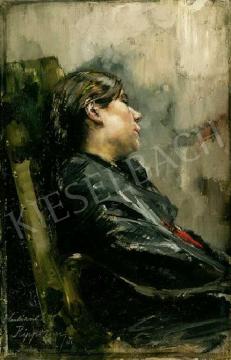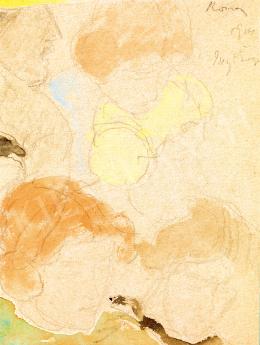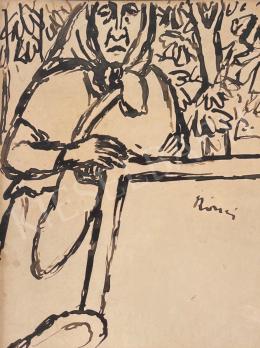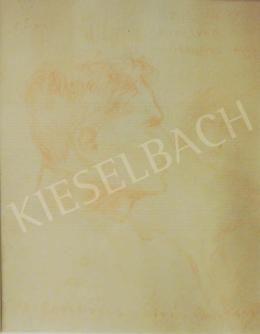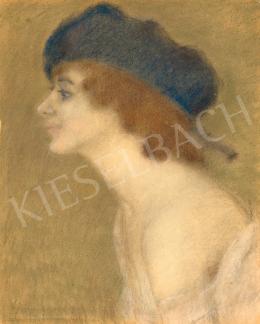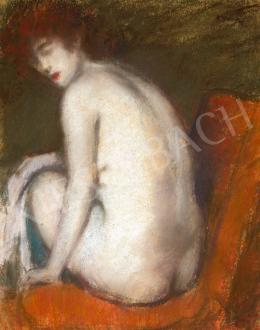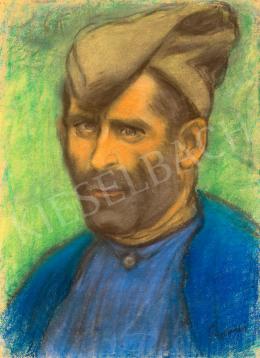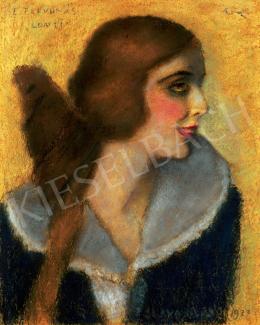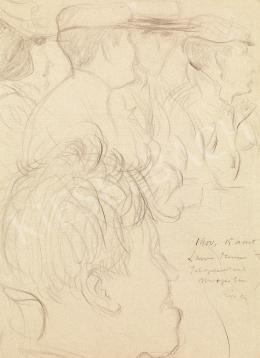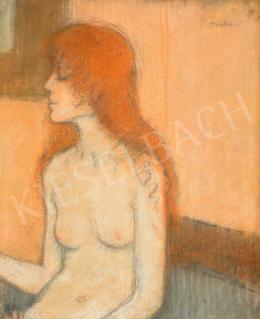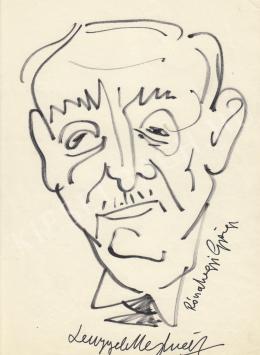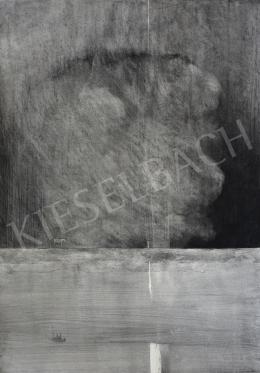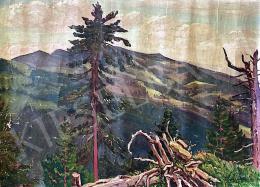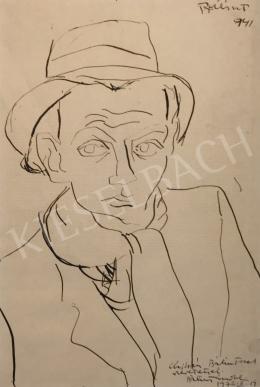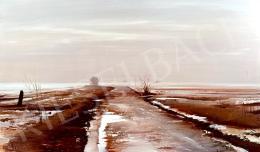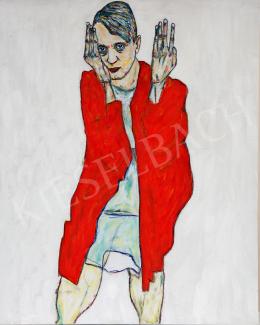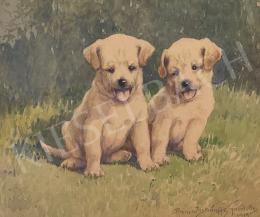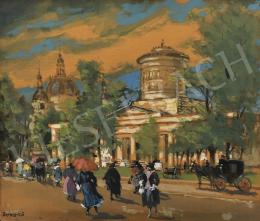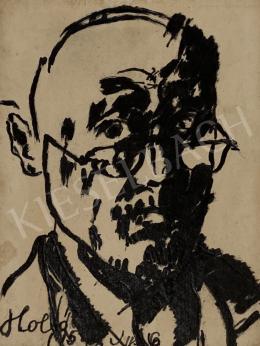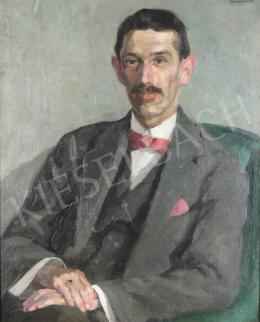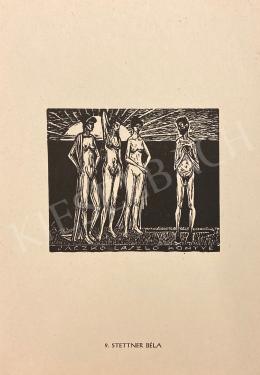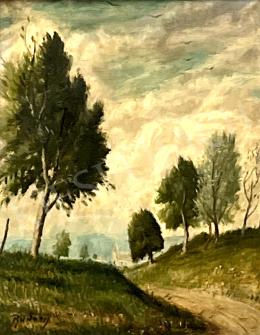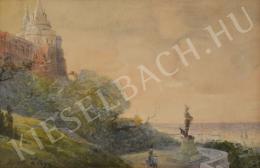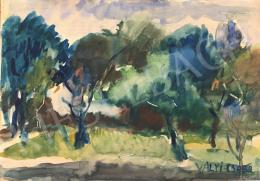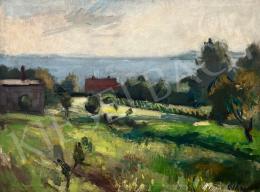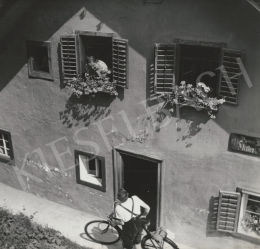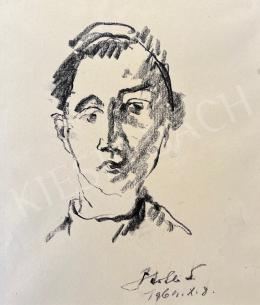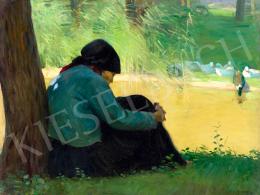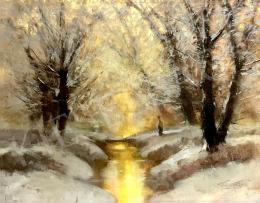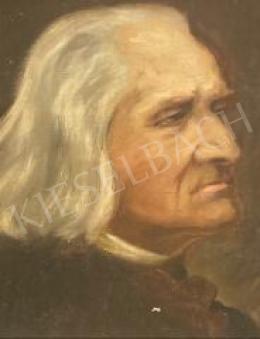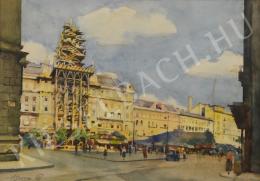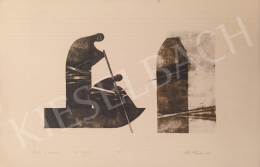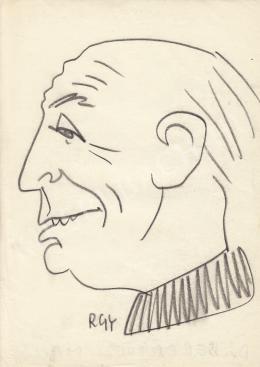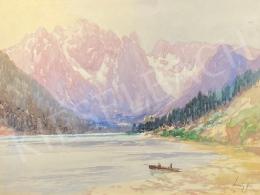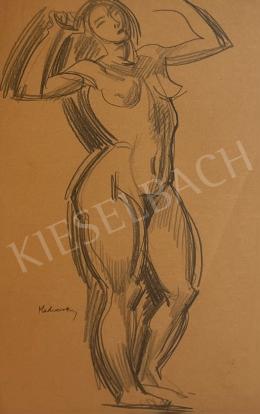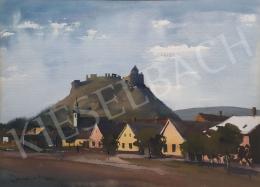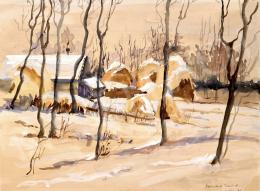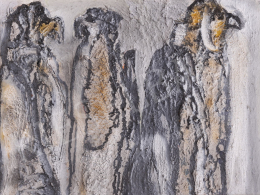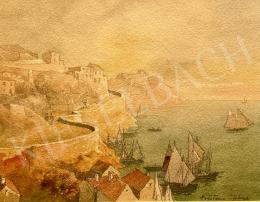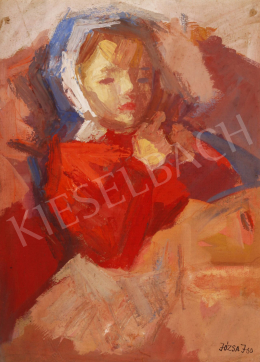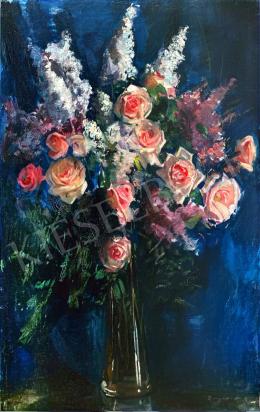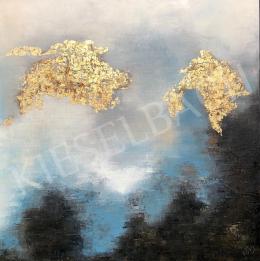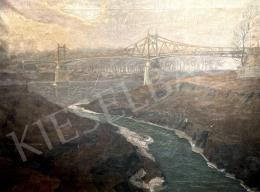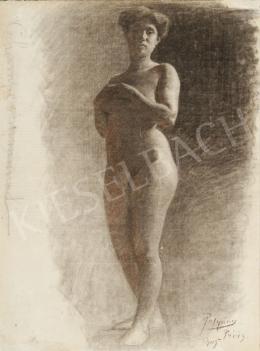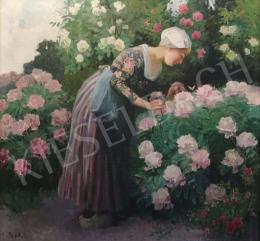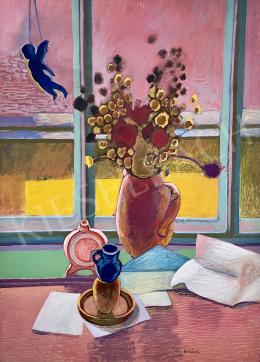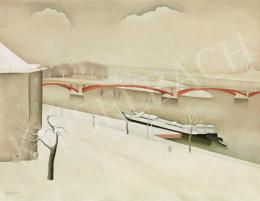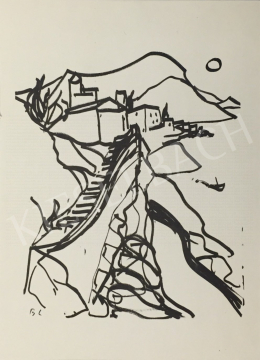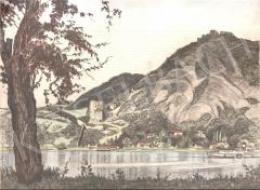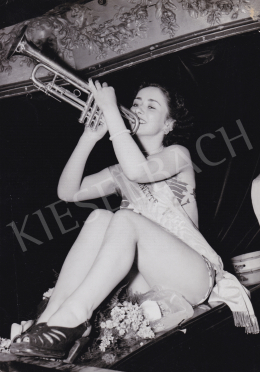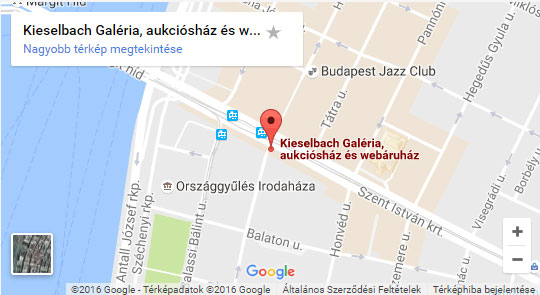Despite being one of the most successful of the so-called gallery painters and renowned master of official portraits following the Great War, there's relatively little known about the life of Bertalan Karlovszky (born on Munkács in 1858 - died in Budapest in 1938). He has no monography and he only had one exhibition of his collected works in the Műcsarnok in November, 1921. Our sources are scarce, either. Like many other would-be Hungarian painters he went to Munich in 1878 to pursue his studies. This is where he sent a letter from to Munkácsy [the famous Hungarian painter] to Paris: 'Dear Honourable Mr. Munkácsy! Being in dire straits and in order to be able to further my studies at the academy I have previously applied to You for financial aid. Having realized the inappropriate nature of my request I hereby offer an apology and request that You keep me in favor for the future. If, by any chance, You would have some work that You think You can trust me with, please commission me with the same. It is my greatest desire to see your most recent work, but unfortunately I cannot go to Vienna and - besides the one in the Pest Museum - I have never had the chance to see any of your works and therefore learn. Please accept my apology once more for troubling you, I remain your most humble servant - Karlovszky Berczi, Munich, January 16, 1882.'. (Hungarian National Gallery, Document #3056/1930/84.)
Similarly to Rippl's attempts later in 1887, Karlovszky has aspired to come near Munkácsy without actual knowledge of his works, inspired simply by the domestic fame of the latter. Munkácsy's successful career provided hope and encouragement for needy aspirants. Nevertheless, Karlovszky'request has been fulfilled. Artúr Elek gives an account of the years spent in Paris as follows: 'He has spent many years in Paris. He came to Munkácsy as an apprentice of Gyula Benczúr and became his apprentice as well. It is rumoured that - like other young Hungarians - he was heavily involved with making replicas of the master's paintings made to orders from America. It is also rumoured that Karlovszky was particularly good at imitating the style of Munkácsy...' (Elek i.m. 1764). Rippl-Rónai has also given an account of this practice established in Munkácsy's studio: 'In Colpach...I painted a smaller work [of Munkácsy], that is, copied after a larger one... He awarded a substantial fee for a larger one of the many small replicas made that way. This way he supported his valued apprentices not only morally but also financially... At that time, beside myself, he also supported Ottó Koroknyai and his apprentice, László Szamossy, the son of his former drawing teacher in the same manner he used to support Bertalan Karlovszky, whom he regarded as a very talented apprentice and who has become independent by then.' (Rippl-Rónai i.m. 19). Although their opinion on art and their artistic ways have later become completely different, their friendship that has started in Munkácsy's studio lasted. He wrote to his parents on December 6, 1897, from the special exhibition of the National Saloon and informed them that 'Lazarine stays with Karlovszkys' (from the archives of the Hungarian National Gallery). On December 19, 1897, he sent his letter to Ödön, his younger brother, from Wiesbaden: '... as a deposit, I have left at the Karlovszkys a box of well-wrapped Zsolnay china (must be 8-10 pieces, although I'm not sure). I also left behind the case that belongs to my bycicle along with its contents... If you'll have the chance please send a turkey or something of that sort to the Karlovszkys - they have been very kind to me...' (Genthon i.m. 145.). In his letter to Ödön dated January 2, 1901, he described the reception of his retrospective exhibit opened in the Hotel Royal on December 22, 1900, and he added that '
... the Karlovszky ball was great - he'll write to you. They have eaten the pheasant all by themselves. They thanked you for it. I have read your letter aloud to them. - Keep on pushing...' (from the archives of the Hungarian National Gallery, #499). This latter remark refers to Ödön's activities as a collector, since the letter referred to hereinabove might have included a request to Karlovszky to donate a work of his to Ödön. Indeed, Ödön's heritage, that served as a basis for the collection of the museum named after his brother and located in Kaposvár, there are six ink drawings and one sepia drawing made by Bertalan Karlovszky (Horváth i.m. 108).
The beautiful picture, that was once owned by Bertalan Karlovszky and has resurfaced after more than one hundred years is particularly important, because no original painting of Rippl-Rónai from his first two years spent with Munkácsy has been known to date. As regards replicas, only two are known: a melancolic and rustic genre painting in Munich-style (Sorrow / Paris, 1887 - The Collector Magazine, Volume I., 1912 I-II. 74. Replica 260) and A hand of beziguet (OMKT 1888, Autumn Exhibition, #347. Replica. Reported by Mária Bernáth, Hungarian National Gallery, #14), that is painted in the style of Munkácsy's gallery paintings with great skill and is on display in the Műcsarnok. This is the painting, which prompted him - in his letter dated September 26, 1888 - to announce his intention to change his name and use double names (Bernáth, i.m. 157).
This piece of information makes it possible to further narrow down the period during which the painting was made, that is, it probably was painted in the first eight months of 1888. We can ascertain from the replicas how much he evolved in mastering his painting skills at Munkácsy's side. What makes the portrait of this young girl sitting in a high-backed leather-upholstered armchair with eyes closed and head tilted particularly attractive is the inner peace, which was going to return in the quiet calm of the Kaposvár home portraits, rather than the refined rhytm of whites, reds and greens scintillating from brownish greys or the plasticity of the surfaces illuminated by the shaded light of the lamp standing invisibly to the left. This is not a genre painting, it is sincere. He painted it for his own enjoyment and had the strength to pass it to someone he loved.
Although small by size, the painting given to Bertalan Karlovszky as a memory has a great significance in the history of Rippl-Rónai's works.
Mária Csernitzky






